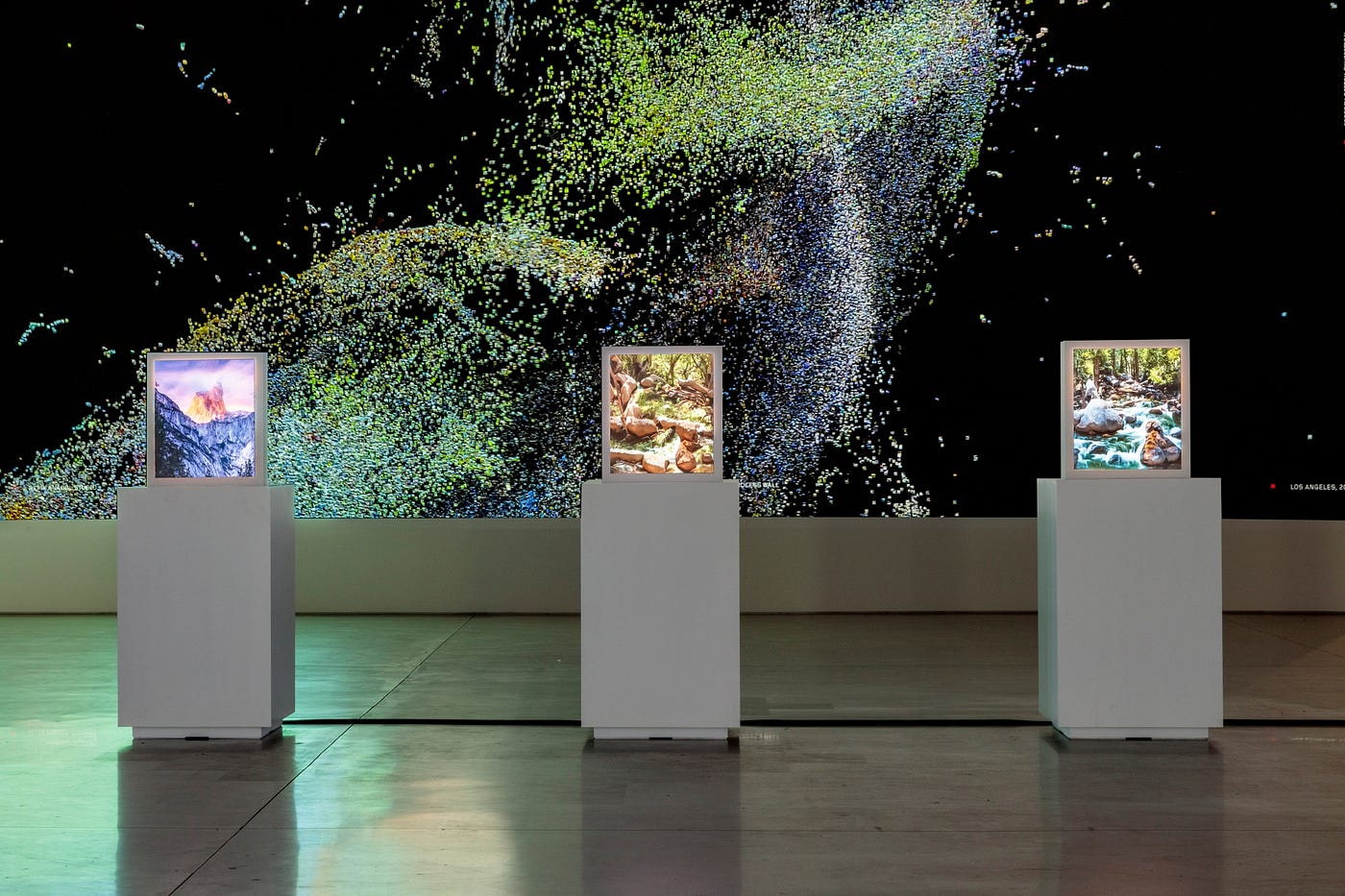
This week London, with the help of the VAULT Festival, leads the scene — as usual — with two solo shows with a participatory kick at said festival and an experiemental XR/Live fusion piece at the Barbican.
Over in LA, Laura’s review has talked me into checking out Refik Anadol’s Living Paintings at Jeffrey Deitch gallery. I bet it will do the same for you. Wanna go? (Now which of my friends will take me up on this?)
–Noah Nelson, Publisher
Looking for more? Last week’s Review Rundown “The One With the Consequences of Our Own Choices” has some mysteries to solve.
Are you a creator who looks upon these reviews with envy? Okay, the positive ones, at least? Then you might want to check out our How To Get Covered By NoPro guide. Want to get listed in our newsletter and have your event shared with our social media following? Submit a listing to Everything Immersive.
Keep No Proscenium free for all by becoming a Patreon backer today!
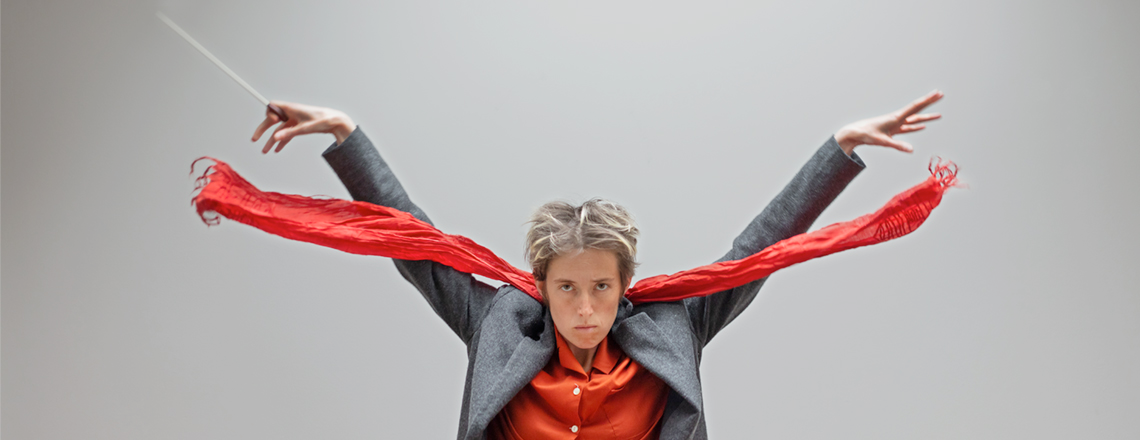
Boorish Trumpson–Claire Perry
From £13.00; VAULT Festival, London; Run concluded
Can good comedy hide in a tired joke? Going by what I witnessed at The Vaults’ “Boorish Trumpson” the answer appears to be a surprising “yes.”
The intimate show, a solo performance by the remarkably energetic and talented Claire Perry, casts the audience as members of an elite orchestra, who are rehearsing for Last Night of the Proms, only to find that their usual conductor is unavailable. Instead, this rehearsal will be placed in the frantically-gesticulating hands of the ambiguously Slavic “Boorish Trumpson.”
As Boorish, Perry manages to simultaneously unnerve and delight the audience with a brand of physical comedy that, at its best, is worthy of Rowan Atkinson or the early years of the Pythons. Perry’s use of props provides some of the show’s best material–she manages to make wordlessly moving a music stand uproariously funny more than once. The increasing audience involvement is also a treat–audience members can expect to sing, play the vibraphone or another musical instrument, or be asked to recite their orchestral credentials at the drop of a hat.
The show’s weakest point, oddly, is the selling tagline: its political humor. While some of it works quite well (an audience/”orchestra” member whose performance on the maracas is deemed underwhelming gets furiously dubbed “Maraca ‘Bama”) much of the act feels tired, with “fake news” and “Brexit means Brexit” jokes we’ve all heard before. And I couldn’t help wondering what the point of continuing these jokes was: neither Trump nor Johnson are even in power anymore, and frankly, reducing them to clowns seems to minimize the material harm they did.
Ultimately, I cannot complain too loudly about “Boorish Trumpson.” I laughed, hard, at Perry’s mad conductor, and the improvised music, manic stares from Perry herself, and call-and-response were a treat. But I left with a sense of disappointment that this wasn’t just the physical comedy show about a crazed conductor with a big dream it so clearly wanted to be. I don’t know a catchy name for that show, but I would have loved to see it.
— Ellery Weil, London Correspondent
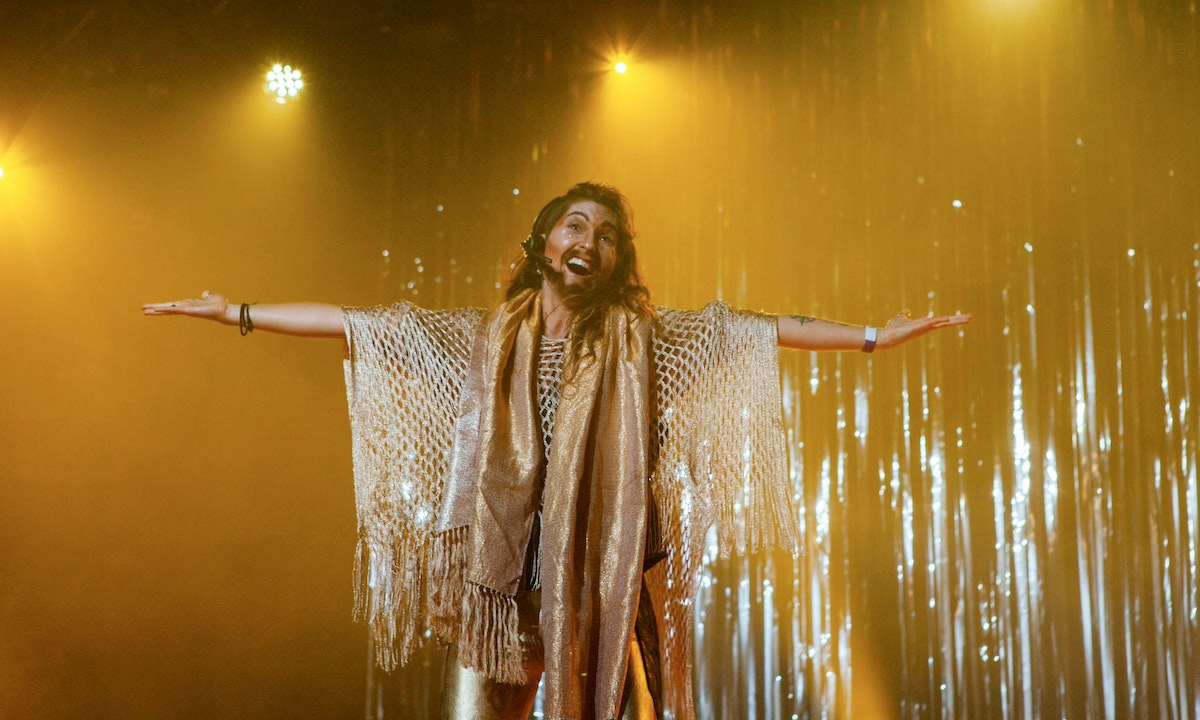
Healing King Herod–Riss Obolensky and Eloise Poulton
Tickets from £13.00; VAULT Festival, London. Run concluded
It was when the first baby hit the baseball bat that things started to get weird. Sitting in the stands at actor Riss Obolensky and director Eloise Poulton’s remarkably strange personal development comedy, I realized I should have been expecting weird stuff, but even so, Healing King Herod managed to surprise me.
The premise of the show is enough to raise an eyebrow: King Herod, as in, the figure from the Christian Bible best known for the Massacre of the Innocents, has changed, and wants you to change, too! Specifically, now that he’s turned away from his baby-massacring ways, he’s launched a personal development program, and thinks that you could really, really benefit from it–for a fee, of course.
The audience is addressed as potential program members, currently experiencing a “taster” of the full course. If the taster is anything to go by, the full course will involve chaotic slideshows, synchronized screaming, improvised song, impromptu flashbacks, and a really quite astonishing amount of strawberry jam and jam-related products. There’s also an impressive use of light effects and sound to own the mood–plus an improvised gag about the trains rattling above the theatre that somehow managed to never get old.
As a solo performer, Obolensky owns the stage and the room, playing Herod as simultaneously hilarious, sinister, and sad. The show is only “immersive” if you consider being part of a “live studio audience” an immersive experience, with audience participation mostly of the “make some noise if you’re happy to be here!” variety, but it is certainly deeply engrossing.
Healing King Herod bills itself as a clown act and drag show, and these are both true. It’s also got some surprisingly sincere things to say about trauma, and a sneaky snipe at self-help schemers. This show was weird, fun, undefinable–quite a ride, and, as Herod would say, quite a choice.
Get No Proscenium’s stories in your inbox
Join Medium for free to get updates from this writer.
SubscribeSubscribe
–Ellery Weil, London Correspondent
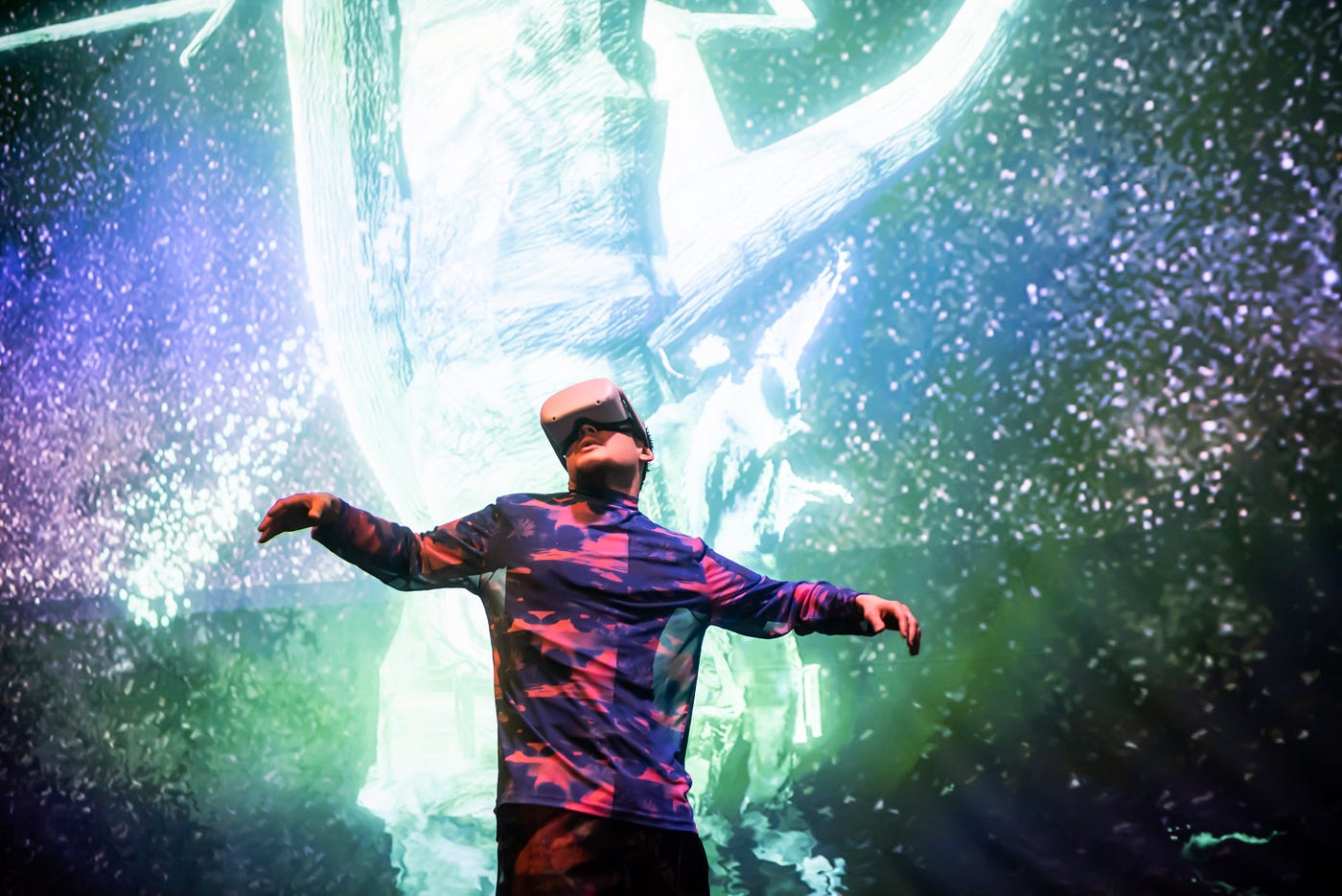
Home X — Kakilang and Don’t Believe in Style
£6 digital experience £16 live experience; London, UK ; Run Concluded
There is a long list of topics around Home X that won’t be covered here, like:
- All the magical things Home X gets right.
- All the missteps Home X makes on trying to deliver its core idea.
- The innovative tricks that will leave techies in the crowd asking ‘how day do dat?’
- The fact that it is not a VR show, but a show with VR in it, which leads to…
- The use of HMDs as mask in performance.
- The occasional committing of cardinal game design sins.
- And the ingenious if accidental ploy of sending everyone on your CRM list an invite to press night.
Instead I’m going to focus on a specific discussion Home X is having with the concept of audience. The creators have split the work along the live/ digital rubicon, with those joining at The Barbican’s Pit seeing a stage, one performer in VR, one engineer controlling the sound and a 3 sided projection screen. This screen briefly shows us another performer and engineer in Hong Kong until it becomes our portal into the digital realm. Here, those who have joined from around the world, control prancing creatures in a serene valley. This is then disturbed and disrupted by the appearance of two giants (the previously mentioned performers who are streamed in via volumetric capture).
Thus Home X places itself in the cultural context squarely between Limbik Theatre’s Father Land and The Royal Shakespeare Company’s Dream in its use of technology to produce interactivity. However the closest parallel can be drawn to The National Theatre’s NT Live, whose benevolent goal was to increase access via streaming. The drawback being that live and digital audiences were incapable of gaining the same level of agency within NT Live, with those at home receiving their theatre passed through a filmmaking lens. Home X flips this script. The live audience watches the core performance through the eyes of a camera, moved around the virtual space. Meanwhile those at home can make their own way through the story. Creating dramaturgical structures that can serve both audiences well is difficult, and the focus of Home X wavers between the two groups, meaning that at one point or another everyone is short changed. What is produced however pushes the conversation around hybrid audiences and modes of spectating in the right direction and does so much more than larger, well resourced productions.
— Roderick Morgan, London Correspondent
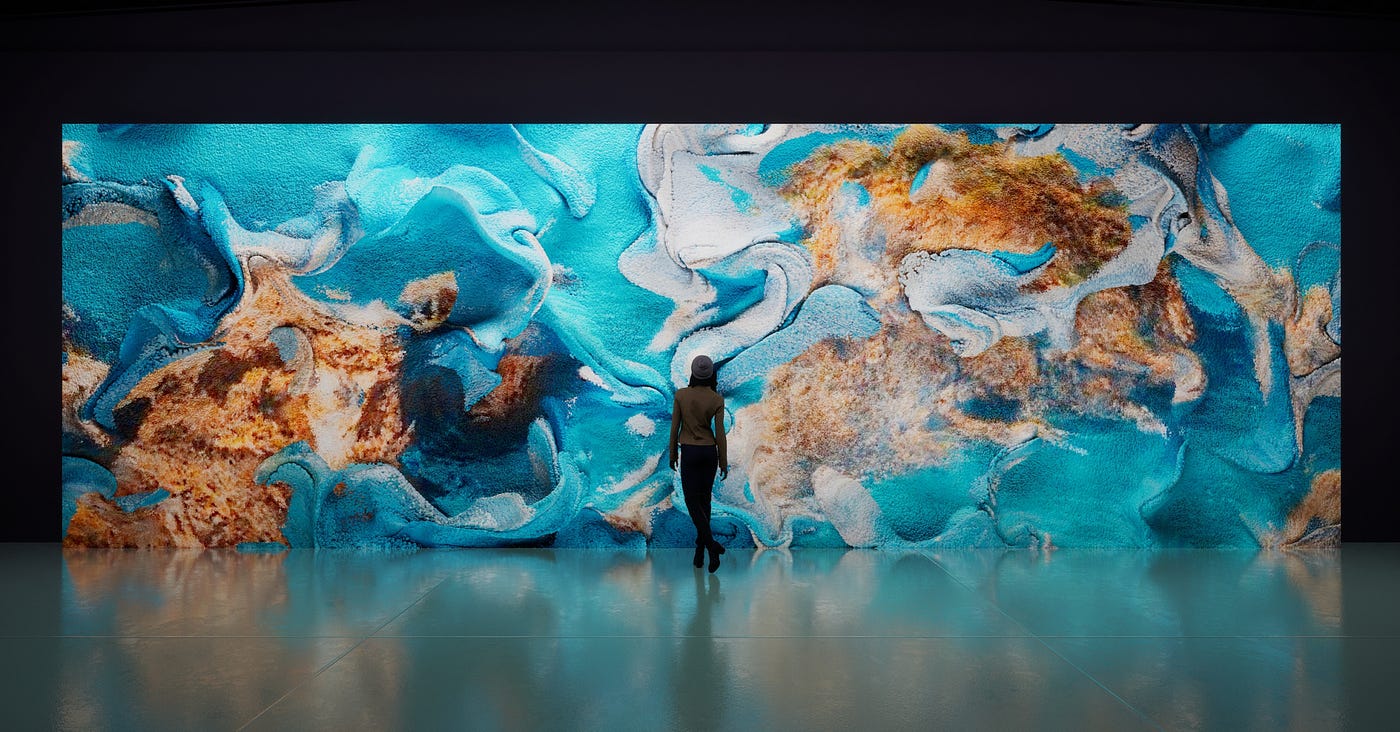
Living Paintings — Refik Anadol
Free; Los Angeles; Closes April 29
Refik Anadol’s work is “a unique experience that explores the interaction between technology and art. The exhibition is a collection of installations that combine data visualization, machine learning, and architecture to create a mesmerizing display of light and sound.”
Or so says ChatGPT, according to art publication Hyperallergic.
That “review” is actually of Unsupervised, Anadol’s giant animated piece at the Museum of Modern Art in New York. And yet, the entire article (and subsequent prompt to assess the art from a post-colonial angle) seems — as is often the case with ChatGPT — like a legitimate, if bland, examination.
Amidst current conversations about artificial intelligence, and AI-generated art specifically, is additional work by Anadol, this time as a show at the Jeffrey Deitch gallery in Los Angeles. Living Paintings is unified by a theme of California-related datasets (wind, ocean, national parks), and is, in fact, a “mesmerizing display of light and sound.”
The exhibition consists of framed animations, relief sculptures, a mirrored infinity room, and two massive projections (the opening reception also featured an AI-generated “garden-like” scent); the largest of those projections is a process wall. According to Anadol, the process wall serves to “demystify the AI decisions, showing the algorithms.”
A misconception about his work is that AI replaces him, that he’s relegated himself (or relieved himself, depending upon perspective) to a kind of switch-flipper: He initiates a neural network chain reaction and the final output lacks creative input or artistic vision. In reality, machine learning systems and aggregated data are a type of tool, one he likens to a “thinking brush”; his is a crafted process that results in evocative, dynamic art.
In recent years, his work has gained visibility beyond the fine art arena. Machine Hallucinations launched Artechouse’s NYC location, data-driven compositions were projected onto the steel meringue of Frank Gehry’s Walt Disney Concert Hall as a multi-day public event, and most recently, his pixelated cascades were a highlight of the 65th Grammy Awards’ set design.
Some critics may dismiss his work as “an extremely intelligent lava lamp,” while “the humanities, with their unprofitable baggage of historical and moral concerns, are being allowed to wither” (did Wind Map elicit the same reaction back in 2012…?). But rather than decry artificial intelligence as “artificial stupidity,” perhaps we should, especially after years of intense and sustained global hardship, escape into gorgeous fantasy; perhaps we could “think about data as a pigment” and, if only for a moment, surrender to the dreamlike hypnosis of Refik Anadol’s art.
— Laura Hess, Arts Editor
Discover the latest immersive events, festivals, workshops, and more at our new site EVERYTHING IMMERSIVE, new home of NoPro’s show listings.
NoPro is a labor of love made possible by our generous Patreon backers. Join them today!
In addition to the No Proscenium website, our podcast, and our newsletters, you can find NoPro on Facebook, LinkedIn, YouTube, Twitter, Instagram, in the Facebook community Everything Immersive, and on our Discord.



















Discussion